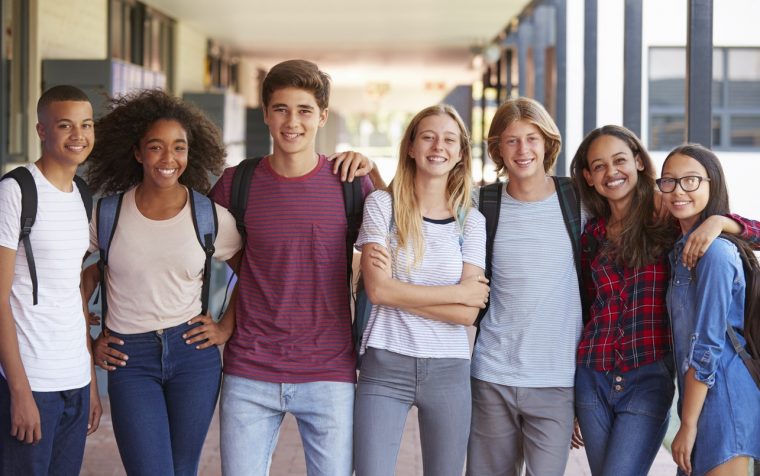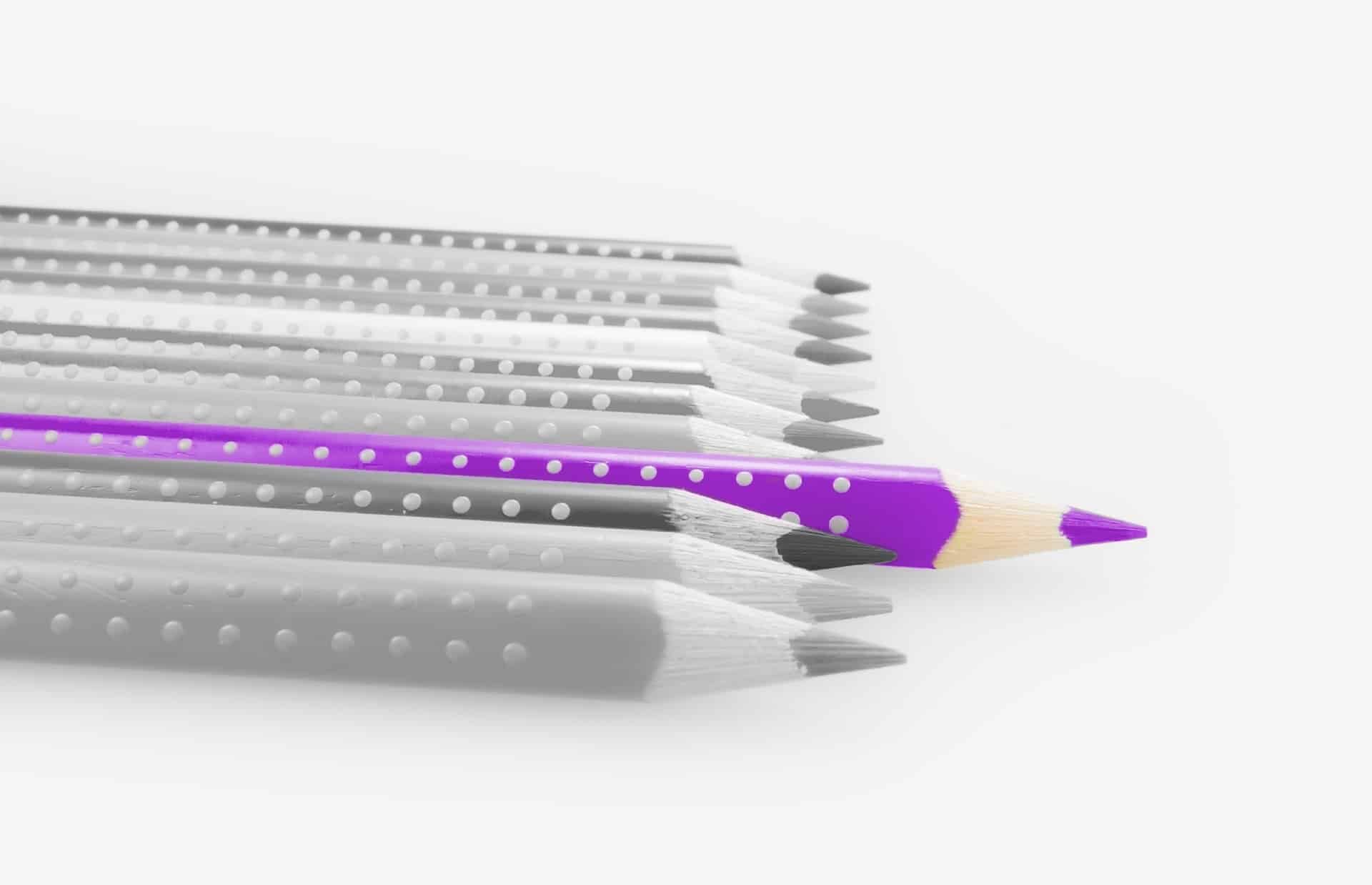Each year, the TAGT Research Division leadership team works together to explore current research in an area of giftedness that is of interest to our membership, and presents the findings at TAGT’s giftED (Annual Conference) and Leadership Conference during our signature Diving Deeper Session. Topics are selected for the following year during our division meetings based upon suggestions and ideas of our membership.
The topic selected for the 2018 Diving Deeper session focuses on gifted students during secondary and higher education program years. Most of the research on program options for gifted learners focuses on elementary gifted program options, and in Texas, the most prevalent options for secondary gifted learners include honors courses, Advanced Placement (AP), or International Baccalaureate (IB) Diploma Programs. However, Dixon (2009) shared a variety of program options for secondary learners. Those program options include:
- AP and IB programs;
- special schools and magnet schools;
- honors classes, seminars, university courses, dual enrollment programs, and extracurricular course offerings;
- early college entrance programs;
- talent search programs;
- study abroad programs; and
- distance education courses.
Each of these programs has strengths and weaknesses relative to the services it provides for gifted learners.
Within higher education, similar provisions are offered for advanced learners via honors education programs. According to the National Collegiate Honors Council (n.d.),
Honors education is characterized by in-class and extracurricular activities that are measurably broader, deeper, or more complex than comparable learning experiences typically found at institutions of higher education. Honors experiences include a distinctive learner-directed environment and philosophy, provide opportunities that are appropriately tailored to fit the institution’s culture and mission, and frequently occur within a close community of students and faculty.
(para. 2)
In higher education, traditional honors programs are designed as cohorts, where the honors students live together in the same residential life building, have opportunities for acceleration through the curriculum, are provided with scholarship opportunities, meet a required minimum GPA, and are provided other perks unique to each institution.
In our 2018 Diving Deeper session, we will review four studies dealing with gifted students at the secondary level and three studies dealing with gifted students at the university level. The relationship between environmental factors and student success is a theme that was echoed throughout the research studies published in 2018. Brigandi, Weiner, Siegle, Gubbins, and Little (2018) found a positive relationship between environmental factors and student success in a Type III Enrichment program. Beason-Manes (2018) studied the impact of curriculum on motivating gifted secondary students to challenge themselves to become leaders of change, determining that providing mentoring programs to adolescents is key in their identity development and success within gifted programs (Ball, 2018; Beason-Manes, 2018). Mullett, Kettler, and Sabatini (2018) found that learning environments, instructional supports, social supports, teacher qualities, direct involvement in learning, self-perceptions of STEM capability, and hands-on learning opportunities experienced in secondary education had the potential to shape students’ attitudes toward the field of STEM.
Research suggests that postsecondary gifted students may benefit from participating in honors programs that afford them the opportunity to develop positive relationships with peers and experience continued academic challenges, resulting in a greater probability of retention and completion of their degree (Bowman & Culver, 2018). The positive effect on retention and a 4-year graduation rate is impacted by honors programs at less selective colleges, especially in historically underrepresented gifted populations (Bowman & Culver, 2018). Hébert (2018) explored the impact of strong faculty and student relationships in the success of high-achieving first-generation college students. Plominski and Burns’s (2018) findings support the need for honors programs during higher education. In their study, they explored the impact of an honors program on increasing positivity and lowering levels of dysthymia (enduring mild depression) when compared to the non-honors students. Moreover, the need for supporting the whole child during the higher education experience is a common theme found in the 2017–2018 research.
The following annotated summaries share some of the 2017–2018 research findings on being gifted in secondary and higher education.
Literature Review
Ball, H. B. (2018, February). Starting a high school mentoring program for the gifted: Opportunities and challenges. Teaching for High Potential, 13–14.
In a Winter 2018 article published in Teaching for High Potential, Ball (2018) highlighted the benefits, limitations, and other helpful information for developing a quality mentoring program for secondary gifted students. Ball stated that mentoring programs for secondary gifted students can provide a number of opportunities to collaborate with family and community members as recommended by the NAGC Pre-K–Grade 12 Gifted Programming Standards. These collaborations provide opportunities for students to make connections within their local communities and develop social networks for future career contacts. Mentorships allow students to view their community members as individuals with whom they can develop lasting bonds. The students may view their mentors as models for success and develop hope for their own futures. These collaborations can be especially beneficial for gifted at-risk students by providing them with guidance to a brighter future.
Any given program will have challenges to overcome, and Ball (2018) offered suggestions for success. Because mentorship programs for gifted youth are not common, administrative and community support for a gifted mentorship program can be difficult to obtain (but are imperative in developing a quality program). Reaching out and personally inviting individuals to either act as a mentor or to suggest other mentors may encourage administration and community members to be actively involved in the mentoring program.
Ball concluded his article with suggestions for steps to be taken in order to help prepare mentors for their important task. The first step, after volunteers fulfill school and district requirements for working with students, is to set up an informational meeting with the qualified mentors. At this meeting, expectations of the mentors and mentees should be discussed in detail. Role-playing opportunities for greetings, active listening, and difficult conversations should also be provided. These informational meetings can be used as a way to establish opportunities to schedule meetings between the mentors. Providing a support system for the mentors is important in developing an effective mentoring program. Ball believed a successful mentoring program will allow gifted secondary students to reach their full potential.
Beason-Manes, A. D. (2018). Community activism as curriculum: How to meet gifted students’ needs while creating change. Gifted Child Today, 41, 19–27.
Gifted students need to engage in producing authentic products with real-world implications for change in the society. Beason-Manes wrote about a community activism curriculum that she created and implemented with seventh-, eighth-, and ninth-grade gifted students. The goal was to create a curriculum for gifted middle school students that would promote community activism, “well-rounded citizens,” and polished leaders who know how to advocate for others and work for lasting change. Renzulli (2002), Terry (2003), and Terry, Bohnenberger, Renzulli, Cramond, and Sisk (2008, as cited in Beason-Manes) revealed that activism as a learning experience produces beneficial results for activist students and recipient communities, “deeper learning for students” (p. 20), and “greater benefits for society” (p. 20). Stewart, Webster, and Bai (2013, as cited in Beason-Manes) reported that the school typically encourages a passive learning environment where students become “passive bystanders to their own learning,” unconcerned and insensitive about solving problems of social significance, and insensitive to “social injustices” (p. 20). Renzulli (2002) and Terry (2003, as cited in Beason-Manes) stated that “As a society, we should be concerned that gifted and talented children grow up to elect to use their gifts and talents for the betterment of the world in which they live. At present, though, no one can explain why some very bright individuals choose to work for the greater good of society and others dedicate their life’s work to their own benefit.” (p. 20)
Beason-Manes concluded that by engaging in community activism projects and assignments very young gifted children can acquire the “social capital” needed to develop greater concern for others and the society in which we live.
Brigandi, C. B., Weiner, J. M., Siegle, D., Gubbins, E. J., & Little, C. A. (2018). Environmental perceptions of gifted secondary school students engaged in an evidence-based enrichment practice. Gifted Child Quarterly, 62, 289–305.
In this qualitative case study, the relationship between participating in enrichment experiences and environmental perceptions of gifted secondary school students was explored. Participants in this study included 10 gifted secondary students, their teachers, and their parents. Students were enrolled in a gifted program based on the Schoolwide Enrichment Model Type III Enrichment. This was a unique setting in secondary education, as the majority of program offerings are acceleration-based. Semi-structured interviews were used to collect data from participants. Interviews varied between 20 to 40 minutes in length. Interview questions were developed by the researchers. Data were analyzed using inductive and deductive thematic analysis. Findings of the study indicated positive perceptions of participant environment and learning experience. Brigandi et al. (2018) identified several environmental factors important to student success: the pillars of support; homogeneous grouping with like-ability peers; gifted trained teachers who challenge and supported students’ social-emotional well-being; supportive parents who are actively involved; and mentors who shared expertise, guidance, and support. These environmental factors combined create a learning environment that fosters a mindset of achievement. Students responded positively to this environment, focused on achievement, and successfully learned to self-regulate and navigate through challenges. When an academic environment provides a challenge and students have environmental support, the gifted secondary student excels. The limitations of this study included focusing only on secondary students and only one type of enrichment. Brigandi et al. recommended further research to explore grouping strategies and pillars of support, as well as the impact of environmental factors on diverse student populations.
Hébert, T. P. (2018). An examination of high-achieving first-generation college students from low-income backgrounds. Gifted Child Quarterly, 62, 96–110. Retrieved from http://DOI: 10.1177/0016986217738051
The experiences of 10 high-achieving, first-generation college students from low-income backgrounds, who attended a higher education institution in the Southeast, were the focus of this qualitative research study. The goal of the study was to understand the psychological and social factors that played a role in their success in higher education. The study used a phenomenological interview research design. Kvale and Brinkmann (2009, as cited in Hébert) defined phenomenology as a study “to understand social phenomena from the subjects’ own perspectives and describe the world as experienced by them” (p. 97). Students were selected using a reputational case selection and network sampling. Researchers conducted interviews and reviewed information in informal documents over the course of three semesters. Hébert conducted data analysis, through which he identified themes and relationships among themes to explain the examined phenomenon. Findings from this study support the current resilience literature, which identifies the impact of multiple environmental factors on student success. Family adversity and difficult personal experiences during adolescence were major themes that emerged; however, students benefited from emotionally supportive K–12 educators and academic rigor in high school. Sustained family pride helped to keep the students focused on reaching their goals. Intellectual engagement at the university and influential mentors also played key roles in these students’ success. The participants developed a strong sense of purpose at the university and graduated well-prepared for careers and graduate school. The author noted that “the essential findings of the study can be succinctly captured in the following statement: ‘It’s all about rigor and relationships’” (p. 108).
Miller, A. L., & Smith, V. A. (2017). Exploring differences in creativity across academic majors for high-ability college students. Gifted and Talented International, 32, 44–58.
Miller and Smith (2017) examined differences in the self-perceptions of creativity among 434 students from a variety of majors enrolled in an Honors College program at a Midwestern university. Utilizing the Scale of Creative Attributes and Behaviors (Kelly, 2004), the researchers looked at students’ beliefs in their own, and opportunities for expression of, creativity within their majors across the dimensions of (a) Creative Engagement, (b) Creative Cognitive Style, (c) Spontaneity, (d) Tolerance, and (e) Fantasy. Participating students rated their self-perceptions in these five dimensions using a 7-point Likert-type scale ranging from strongly disagree to strongly agree. The researchers noted that the findings of this study may have implications for university curriculum, faculty instructional practice, and academic and career advising.
Unsurprisingly, arts majors self-reported significantly higher incidences for Creative Engagement (compared to all majors) and Creative Cognitive Style (compared to education majors only). As the authors stated, “Given that there is a cultural presupposition connecting creativity and the arts . . . People perceive artistic and creative identity to be somewhat synonymous” (p. 51). The authors noted that Honors curricula is often concentrated on acceleration. Citing research regarding the importance of creativity training, Miller and Smith suggested that universities consider “innovative interdisciplinary curricula to encourage creative potential” (p. 53). Further, rather than relying primarily on written assignments and tests, the authors encouraged university faculty to incorporate more open-ended options that will support student creativity to better address the motivational and developmental needs of high-ability students. Finally, the authors suggested that academic and career advisors take a more holistic view of gifted students that focuses on their strengths and “encourages students to think about future careers in the context of their overall life values and goals” (p. 53).
Mullett, D., Kettler, T., & Sabatini, A. (2018). Gifted students’ conceptions of their high school STEM education. Journal for the Education of the Gifted, 41, 60–92.
Mullett, Kettler, and Sabatini (2018) investigated the perceptions of secondary STEM learning experiences of seven gifted Honors College students of a Southwestern research university (5 females, 2 males) in a qualitative, phenomenographical research study in order to determine the impact of their secondary school experiences on future STEM aspirations and talent development. Research questions included: “a) In what ways do gifted students conceptualize their advanced high school STEM education? and b) How do such experiences influence their STEM aspirations and talent development?” (p. 62). A five-stage analytical, empirical, inductive framework was developed for analysis of interview data.
A categorized snapshot of the participants’ perceptions was provided by the findings of the study. Learning environments emerged as having the most meaning for the participants, especially with respect to affective aspects, intellectual challenges, epistemological orientation, and academic freedom. The participants also shared perceptions about instructional supports, social supports, teacher qualities, direct involvement in learning, and self-perceptions of STEM capability with respect to their STEM secondary experiences, which closely mirrored those concepts discussed within the literature review for the study.
Additionally, participants’ perceptions of the impact of secondary STEM educational experiences on STEM aspirations at the college level and beyond in STEM careers were shared. Participants of this study were high achievers, passed AP credit exams, and earned college credit for STEM courses taken in their secondary education. Only three of the participants in the study committed to majors in STEM fields, and four of the female students pursued majors in other fields outside of the STEM arena. Mullett et al. recognized limitations of generalization of these findings because of the small sample size and called for further research to investigate student experiences across organizations and cultures, as well as an examination of the experiences of eminent females in STEM fields in order to better understand their success in traditionally male-dominated fields.
Plominski, A. P., & Burns, L. R. (2018). An investigation of student psychological wellbeing: Honors versus nonhonors undergraduate education. Journal of Advanced Academics, 29, 5–28. doi:10.1177/1932202×17735358
This study compared the psychological well-being of Honors College and non-Honors College undergraduate students and examined the levels of stress and depression reported by the two groups. The study consisted of 1,027 undergraduates from a large Midwestern public university; 641 of the participants were enrolled in the university Honors College program, and 386 were not involved with the program. Data collected began with a general demographic survey that also incorporated questions about procrastination and sleep habits. Additionally, eight multiple measures reliant upon self-reporting were utilized, including the Perceived Stress Scale, the Center for Epidemiologic Studies Depression Scale, and the Patterns of Adaptive Learning Scales.
Overall findings suggested that the undergraduate Honors College students experienced higher levels of positivity and lower levels of dysthymia when compared to the non-Honors College students. Plominski and Burns (2018) suggested that this is due in part to the variance of educational and social environments that the Honors College program provides. Program elements included a framework of mentorship, autonomy of direction of education, and the accelerator model approach to curriculum. Engagement lead to less isolation and support, a missing element for the non-Honors College student and a possible contributing factor to the non-Honors College students’ perceived stress and anxiety. An interesting commonality between the two groups was evidence supporting “sophomore slump,” with both groups reporting greater levels of a dysthymic affect. Plominski and Burns (2018) suggested this information can support universities’ efforts to assist second-year students.
Additional References
Ball, H. B. (2018, February). Starting a high school mentoring program for the gifted: Opportunities and challenges. Teaching for High Potential, 13–14.
Beason-Manes, A. D. (2018). Community activism as curriculum: How to meet gifted students’ needs while creating change. Gifted Child Today, 41, 19–27.
Bowman, N. A., & Culver, K. C. (2018). When do honors programs make the grade? Conditional effects on college satisfaction, achievement, retention, and graduation. Research in Higher Education, 59, 249–272.
Brigandi, C. B., Weiner, J. M., Siegle, D., Gubbins, E. J., & Little, C. A. (2018). Environmental perceptions of gifted secondary school students engaged in an evidence-based enrichment practice. Gifted Child Quarterly, 62, 289–305.
Dixon, F. (2009). Programs and services for gifted secondary students: A guide to recommended practices. Waco, TX: Prufrock Press.
Hébert, T. P. (2018). An examination of high-achieving first-generation college students from low-income backgrounds. Gifted Child Quarterly, 62, 96–110. Retrieved from http://DOI: 10.1177/0016986217738051
Kelly, K. E. (2004). A brief measure of creativity among college students. College Student Journal, 38, 594–596.
Kvale, S., & Brinkmann, S. (2009). Interviews: Learning the craft of qualitative research interviewing (2nd ed.). Thousand Oaks, CA: Sage.
Miller, A. L., & Smith, V. A. (2017). Exploring differences in creativity across academic majors for high-ability college students. Gifted and Talented International, 32, 44–58.
Mullett, D., Kettler, T., & Sabatini, A. (2018). Gifted students’ conceptions of their high school STEM education. Journal for the Education of the Gifted, 41, 60–92.
National Collegiate Honors Council. (n.d.). Definition of honors education. Retrieved from https://www.nchchonors.org/directors-faculty/definition-of-honors-education
Plominski, A. P., & Burns, L. R. (2018). An investigation of student psychological wellbeing: Honors versus nonhonors undergraduate education. Journal of Advanced Academics, 29, 5–28. doi:10.1177/1932202×17735358
Renzulli, J. S. (2002). Expanding the conception of giftedness to include co-cognitive traits and to promote social capital. Phi Delta Kappan, 84, 35–58.
Stewart, T., Webster, N., & Bai, H. (2013). Understanding the impact of a summer service-learning program on the social dominance orientation of gifted adolescents. Journal of Community Positive Practices, 13, 71–88.
Terry, A. W. (2003). Effects of service learning on young, gifted adolescents and their community. Gifted Child Quarterly, 47, 295–308.
Terry, A. W., Bohnenberger, J. E., Renzulli, J. S., Cramond, B., & Sisk, D. (2008). Vision with action: Developing sensitivity to societal concerns in gifted youth. Roeper Review, 30, 61–67.
Katie D. Lewis, Ed.D., is an assistant professor at York College of Pennsylvania, formerly of Texas A&M International University. She teaches undergraduate early elementary education courses, and she also serves as program coordinator for secondary education, postbaccalaureate, and transfer students. Lewis has 5 years of experience teaching in public schools where she served as grade chair, lead science teacher, gifted cluster teacher, and mentor to student teachers. She serves as Chair for the TAGT Research Division and as NAGC Professional Development Network Chair.
Christina T. Dearman, Ph.D., serves as the Gifted and Talented Specialist at Strickland Middle School, Denton, TX. With more than 25 years in education, she has taught in various capacities at the Pre-K through secondary level, serving as an honors level and G/T teacher. She has also had the opportunity to run schoolwide and Saturday enrichment programs, taught at the undergraduate and master’s level as an adjunct professor at the University of North Texas and Texas Woman’s University, and served as Curriculum Director for UNT’s Texas Governor’s School. She currently serves as Treasurer for TAGT’s Board of Directors and sits on the Texas Academy of Math and Science Advisory Board.
C. Matthew Fugate, Ph.D., is assistant professor, Educational Psychology, at the University of Houston-Downtown. He received his doctorate in gifted, creative, and talented studies from Purdue University. His research interests include twice-exceptional students and students from underserved populations. Fugate has presented to audiences nationally and internationally on topics related to twice-exceptionality, Total School Cluster Grouping, program development, and creativity. He is an active member of NAGC and serves on the TAGT Board of Directors.
Kristin L. Majority, M.Ed., has been a professional educator for more than 20 years with most of those years serving the gifted learner. She has a master’s of education in gifted studies from Southern Methodist University and is a Ph.D. candidate at the University of North Texas in the Department of Educational Psychology majoring in gifted and talented education.
Joyce E. Kyle Miller, Ph.D., serves as faculty member and Secondary Education Program Coordinator at Texas A&M University-Commerce. Miller teaches undergraduate and graduate gifted education courses in research and secondary school curriculum and instruction and advises master’s and doctoral students. Dr. Miller’s professional experiences are at the elementary, middle, high school, and postsecondary levels, and her research and writings are in the areas of online curriculum and instruction, gifted education, and cultural diversity. She has served as the TAGT Chair of the Research Division and the Dual Language/Multicultural Division and presently serves on the TAGT Board of Directors as Secretary.
Debra A. Troxclair, Ph.D., Associate Professor at Lamar University, teaches undergraduate and graduate special education courses and gifted education courses; she also serves as program coordinator for Special Education programs in the Teacher Education Department. She is an experienced educator with more than 30 years teaching both at the K–12 level and at the university level, and she has supervised summer programs for gifted children. Her research can be found in Gifted Child Today, Roeper Review, Parenting for High Potential, TEMPO, and Understanding Our Gifted. She currently serves on the Board of Directors for the Texas Association for the Gifted and Talented, the Council for Exceptional Children’s (CEC) TAG Division, and she is a member of the Advisory Committee for the National Association for Gifted Children’s journal, Teaching for High Potential.
Marcy Voss, M.Ed., recently retired after 36 years in public education. During her career, she coordinated gifted and special programs in several districts, as well as served on the Commissioner’s Gifted and Talented Advisory Council and the TAGT Board of Directors. Marcy currently serves as Facilitator for the TAGT Emerging Leaders Program in addition to working as an ELL coach, curriculum writer, and staff development trainer. She is also the parent of three gifted children.







